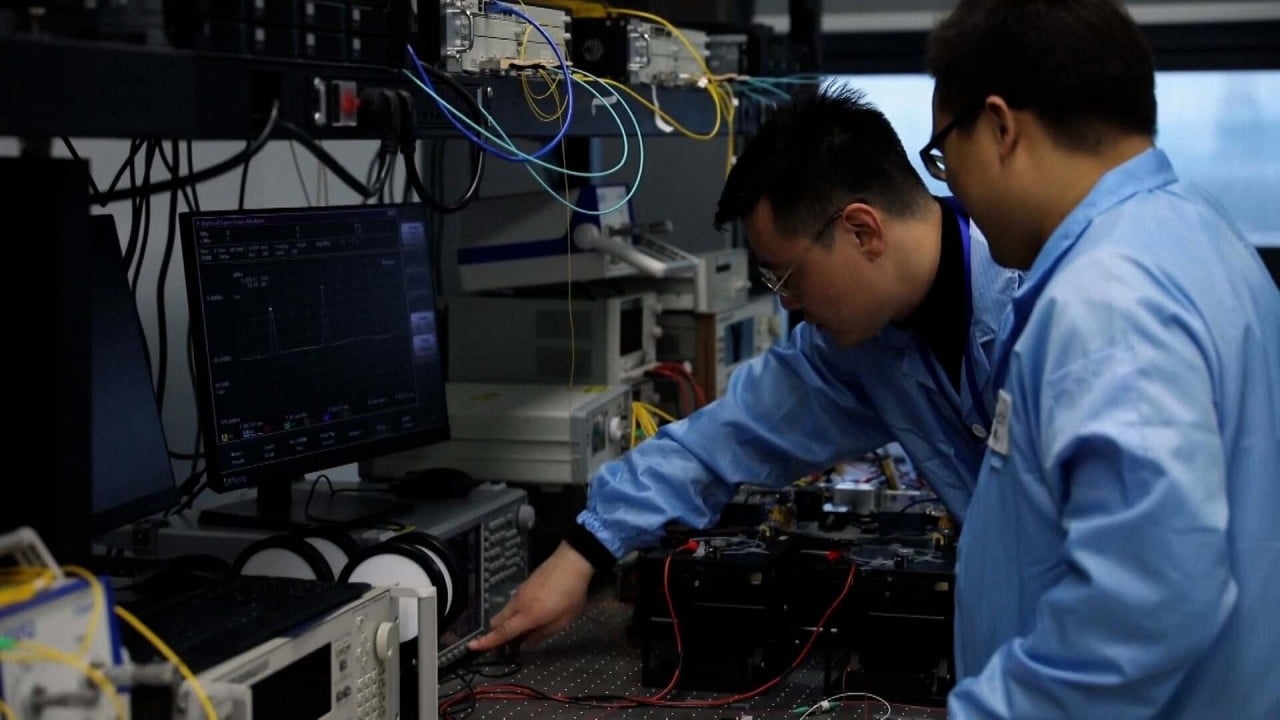In a joint statement on Monday, the countries laid out principles for 6G communications systems, including that they be developed using “trustworthy technology that protects national security.”
The statement was issued by the United States, Australia, Canada, Czech Republic, Finland, France, Japan, South Korea, Sweden and the United Kingdom.
It also emphasized creating secure, resilient and privacy-protecting technology that complies with global standards.
He called for open innovation, supported by international cooperation, to ensure 6G is affordable, sustainable and accessible around the world, including in developing countries.
The statement also emphasized the importance of efficient spectrum utilization and secure supply chains to support a competitive and innovative 6G ecosystem.
Sixth generation wireless technology (6G) is expected to revolutionize communications with data transmission speeds up to 50 times faster than 5G.
Latency (delay in sending and receiving information) is expected to be 10x lower than previous versions.
6G is also expected to outperform 5G in peak data rates, number of connections, mobility, spectral efficiency, and positioning capabilities.
Some experts believe 6G has the potential to bring a disruptive innovation to communications, and a race to monopolize the technology is being seen among governments and tech giants around the world, leading to a shift in standards. Every aspect from configuration to device manufacturing is under scrutiny.
It’s not yet clear when 6G will be generally available, but most estimates put it around 2030.
Chinese scientists move one step closer to satellite internet and 6G networks
Chinese scientists move one step closer to satellite internet and 6G networks
Monday’s statement emphasized the goal of building a secure, inclusive and sustainable 6G ecosystem, saying “cooperation and unity are essential to address the significant challenges we face in the development of 6G technology.” Stated.
Partners include countries with telecom giants such as AT&T in the US, Nokia in Finland, Ericsson in Sweden and Samsung in South Korea. However, it is notable that this list does not include China.
Beijing-based analysts at market research firm IDC see the move as an effort to block China’s 6G development, but said it may not be effective.
The analyst, speaking on condition of anonymity, said 6G is still in the research phase around the world, and its trajectory will depend on how business practices and technological principles evolve.
Chinese scientists focus on 6G for submarine hunting
Chinese scientists focus on 6G for submarine hunting
A researcher at a Chinese university, speaking on condition of anonymity, also said the size of the market in which the technology was being developed was also a factor. He said China had unique advantages given its vast user base compared to sparsely populated countries like Australia.
China has made great strides in wireless communications, quietly moving to the forefront in the 5G era. The country leads the world in the number of base stations, connected devices and patents it owns, making great strides from its position in the 3G era and bringing the pace of development in line with global standards by the 4G era.
The researcher said the move is unlikely to hinder China’s progress in developing 6G wireless communication systems, noting that tech giants such as Huawei will have their own strategies regarding 6G.




